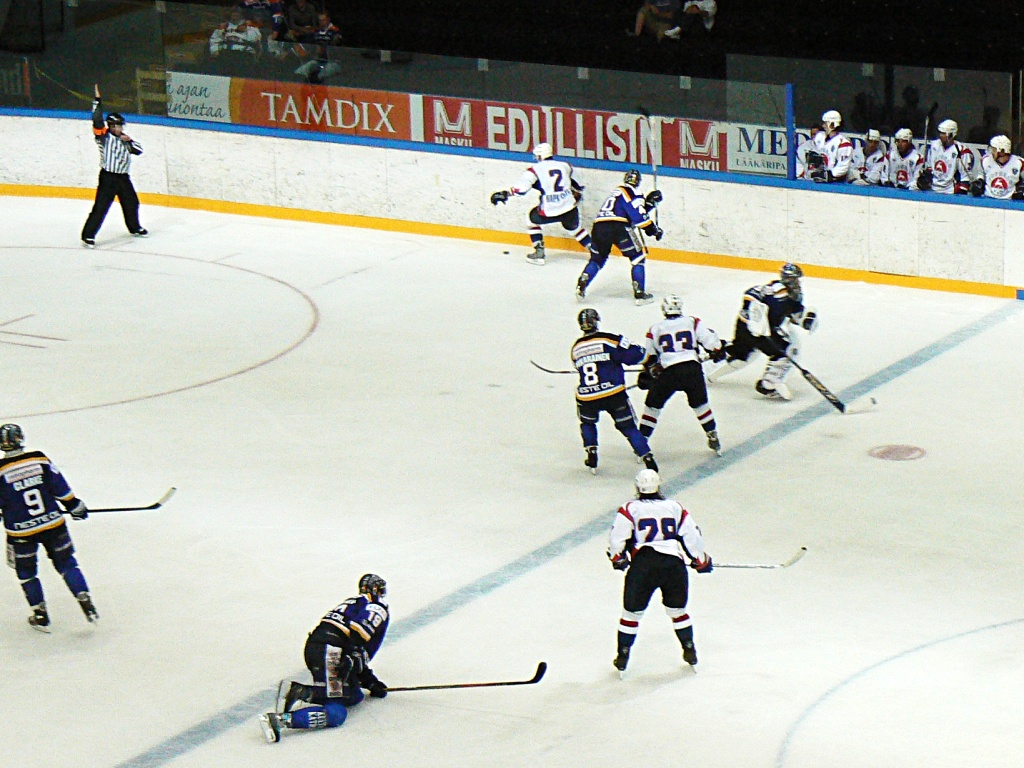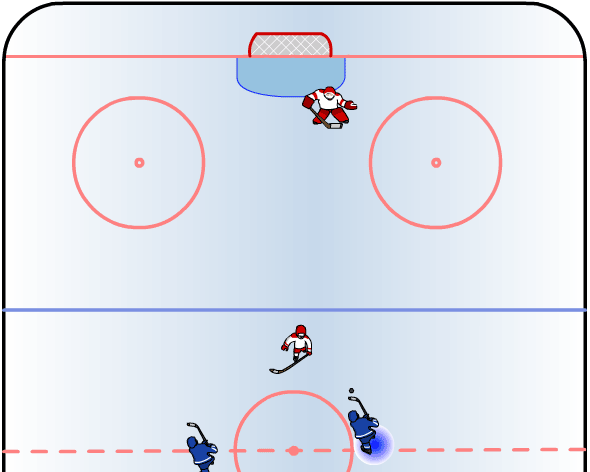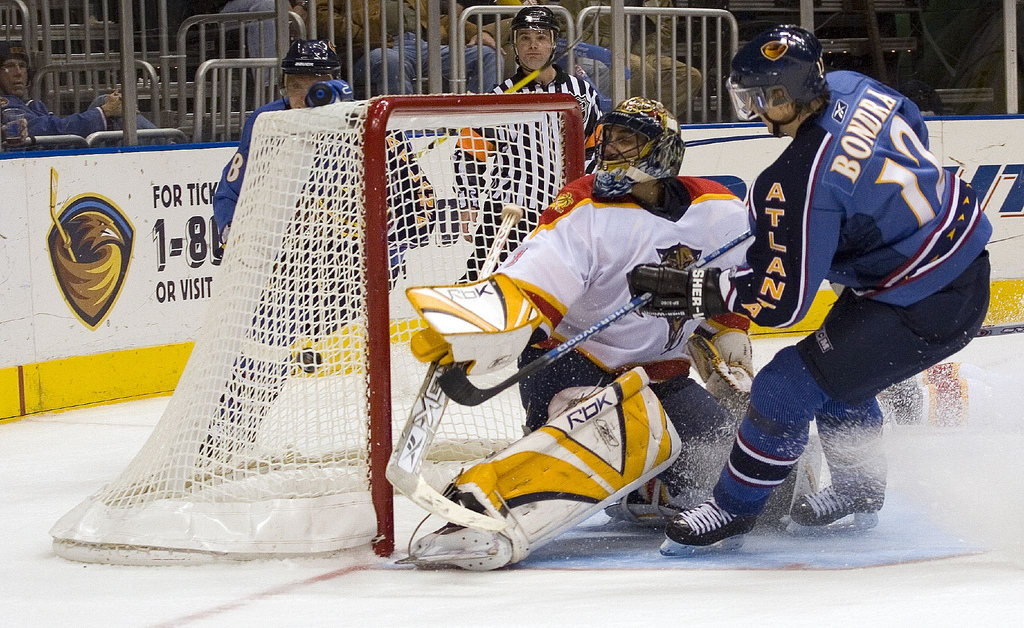|
Todd Brost
Todd Brost (born September 23, 1967) is a former Canadian ice hockey player and head coach. As a player, he won a silver medal playing with Team Canada at the 1992 Winter Olympics ) , nations = 64 , athletes = 1,801 (1313 men, 488 women) , events = 57 in 6 sports (12 disciplines) , opening = 8 February 1992 , closing = 23 February 1992 , opened_by = President François Mitterrand , cauldron .... Brost has been a head coach in the WPHL with the El Paso Buzzards (1996–2000), and in the UHL with the Elmira Jackals (2000–05). He won the WPHL's Coach of the Year award for the 1996–97 season. Awards and honours Career statistics Regular season and playoffs International References External links * 1967 births Huntington Blizzard players Ice hockey players at the 1992 Winter Olympics Living people Olympic ice hockey players of Canada Olympic silver medalists for Canada Olympic medalists in ice hockey Medalists at the 199 ... [...More Info...] [...Related Items...] OR: [Wikipedia] [Google] [Baidu] |
Centre (ice Hockey)
The centre (or center in the United States) in ice hockey is a forward (hockey), forward position of a player whose primary Hockey rink#Zones, zone of play is the middle of the ice, away from the sideboards. Centres have more flexibility in their positioning and therefore often end up covering more ice surface than any other player. Centres are ideally strong, fast skaters who are able to Checking (ice hockey), back-check quickly from deep in the opposing zone. Generally, centres are expected to be gifted passers more so than goal scorers, although there are exceptions - typically larger centres who position themselves directly in front of the net in order to score off rebounds. They are also expected to have exceptional "ice vision", intelligence, and creativity. They also generally are the most defensively-oriented forwards on the ice, as they are expected to play the role of the third player in defense, after the defenceman, defencemen. Centres usually play as part of a line ( ... [...More Info...] [...Related Items...] OR: [Wikipedia] [Google] [Baidu] |
Central Collegiate Hockey Association
The Central Collegiate Hockey Association (CCHA) is a college athletic conference that participates in the NCAA's Division I as a hockey-only conference. The current CCHA began play in the 2021–22 season; a previous incarnation, which the current CCHA recognizes as part of its history, existed from 1971 to 2013. Half of its members are located in the state of Michigan, with additional members in Minnesota and Ohio. It has also had teams located in Alaska, Illinois, Indiana, Missouri and Nebraska over the course of its existence. The CCHA was disbanded after the 2012–13 season as the result of a conference realignment stemming from the Big Ten Conference (of which three CCHA schools; Michigan, Michigan State, and Ohio State, were primary members) choosing to sponsor Division I ice hockey beginning in the 2013–14 season. The remaining CCHA members received invitations to other conferences, such as the newly formed National Collegiate Hockey Conference (NCHC), Hockey East, an ... [...More Info...] [...Related Items...] OR: [Wikipedia] [Google] [Baidu] |
Michigan Wolverines Men's Ice Hockey
The Michigan Wolverines men's ice hockey team is the college ice hockey team that represents the University of Michigan in Ann Arbor, Michigan. Earning varsity status in 1922, the program has competed in 100 seasons. Between 1959 and 1981, the team competed in the Western Collegiate Hockey Association (WCHA) before joining the Central Collegiate Hockey Association (CCHA) until the 2012–13 season.The Record Book MGoBlue.com: University of Michigan Official Athletic Site (''Click on Complete Version to download the PDF record book'') Since the 2013–14 season, the Wolverines have competed in the Big Ten Conference#Men.27s ice hockey, Big Ten, which began sponsoring hockey. From 1991 to 2012, the team played in 22 consecutive NCAA Men's Ice Hockey Championship, NCAA Men's Division I ... [...More Info...] [...Related Items...] OR: [Wikipedia] [Google] [Baidu] |
1985–86 NCAA Division I Men's Ice Hockey Season
The 1985–86 NCAA Division I men's ice hockey season began in October 1985 and concluded with the 1986 NCAA Division I Men's Ice Hockey Tournament's championship game on March 29, 1986 at the Providence Civic Center in Providence, Rhode Island. This was the 39th season in which an NCAA ice hockey championship was held and is the 92nd year overall where an NCAA school fielded a team. The 1985–86 season was the first for the Great West Hockey Conference. Regular season Season tournaments Standings 1986 NCAA Tournament Note: * denotes overtime period(s) Player stats Scoring leaders The following players led the league in points at the conclusion of the season. ''GP = Games played; G = Goals; A = Assists; Pts = Points; PIM = Penalty minutes'' Leading goaltenders The following goaltenders led the league in goals against average at the end of the regular season while playing at least 33% of their team's total minutes. ''GP = Games played; Min = Minutes pl ... [...More Info...] [...Related Items...] OR: [Wikipedia] [Google] [Baidu] |
British Columbia Hockey League
The British Columbia Hockey League (BCHL) is a Junior A ice hockey league from British Columbia under Hockey Canada and BC Hockey. Founded in Vernon in 1961, the BCHL now includes 18 teams. From 1993 to 2021, the league was a member of the Canadian Junior Hockey League (CJHL), an association of Junior A leagues across Canada that would play for the National Junior A Championship. The winner of the BCHL playoffs (Fred Page Cup) would continue on to play the Alberta Junior Hockey League champion in the Doyle Cup for the right to then compete in the National Junior A Championship. In 2021, the BCHL left the CJHL. History In 1961, the heads of four junior "B" hockey teams in the Okanagan region of British Columbia got together and formed the first Junior "A" league in British Columbia's history. The Okanagan-Mainline Junior "A" Hockey League (OMJHL) originally consisted of the Kamloops Jr. Rockets, the Kelowna Buckaroos, the Penticton Jr. Vees, and the Vernon Jr. Canadians. I ... [...More Info...] [...Related Items...] OR: [Wikipedia] [Google] [Baidu] |
Penticton Knights
The Penticton Vees are a junior "A" ice hockey team from Penticton, British Columbia, Canada. They are a part of the British Columbia Hockey League. The junior Vees were founded in 1961, sharing the name of the senior hockey team, the Penticton Vees. History The Junior Vees were one of the inaugural teams in the Okanagan-Mainline Junior A Hockey League (OMJHL), launched in 1961. The league became the British Columbia Junior Hockey League (BCJHL) in 1967. Although it is commonly thought by many that the name "Vees" refers to "victory", the name actually represents the three types of local peaches (Vedette, Valiant and Victory). The Vees were Mowat Cup champions in 1968, 1973, 1980, 1981, 1982, 1985, as well as in 1986, when they were also Centennial Cup champions. After 26 years since their last RBC Cup appearance, the Vees advanced to the championship game in the 2012 RBC Cup in Humboldt, Saskatchewan, defeating the Woodstock Slammers 4–3 on a goal by Joey Benik to win the C ... [...More Info...] [...Related Items...] OR: [Wikipedia] [Google] [Baidu] |
Penalty (ice Hockey)
A penalty in ice hockey is a punishment for an infringement of the rules. Most penalties are enforced by sending the offending player to a penalty box for a set number of minutes. During the penalty the player may not participate in play. Penalties are called and enforced by the referee, or in some cases, the linesman. The offending team may not replace the player on the ice (although there are some exceptions, such as fighting), leaving them short-handed as opposed to full strength. When the opposing team is said to be on a ''power play'', they will have one more player on the ice than the short-handed team. The short-handed team is said to be "on the penalty kill" until the penalty expires and the penalized player returns to play. While standards vary somewhat between leagues, most leagues recognize several common varieties of penalties, as well as common infractions. The statistic used to track penalties is called "penalty minutes" and abbreviated to "PIM" (spoken as single w ... [...More Info...] [...Related Items...] OR: [Wikipedia] [Google] [Baidu] |
Point (ice Hockey)
In ice hockey, point has three contemporary meanings. Personal stat A point is awarded to a player for each goal scored or assist earned. The total number of goals plus assists equals total points. The Art Ross Trophy is awarded to the National Hockey League (NHL) player who leads the league in scoring points at the end of the regular season. Team stat Points are also awarded to assess standings (or rankings). Historically, teams were awarded two points for each win, one point for each tie and no points for a loss. Such a ranking system, implemented primarily to ensure a tie counted as a "half-win" for each team in the standings, is generally regarded as British and/or European in origin and as such adopted by the National Hockey League which was founded in Canada where leagues generally used ranking systems of British origin. Awarding points in the standings contrasts with traditional American ranking systems favored in sports originating within the United States where today the m ... [...More Info...] [...Related Items...] OR: [Wikipedia] [Google] [Baidu] |
Assist (ice Hockey)
In ice hockey, an assist is attributed to up to two players of the scoring team who shot, passed or deflected the puck towards the scoring teammate, or touched it in any other way which enabled the goal, meaning that they were "assisting" in the goal. There can be a maximum of two assists per goal. The assists will be awarded in the order of play, with the last player to pass the puck to the goal scorer getting the primary assist and the player who passed it to the primary assister getting the secondary assist. Players who gain an assist will get one point added to their player statistics. Despite the use of the terms "primary assist" and "secondary assist", neither is worth more than the other, and neither is worth more or less than a goal. Assists and goals are added together on a player's scoresheet to display that player's total points. Special cases If a player scores off a rebound given up by a goaltender, assists are still awarded, as long as there is no re-possession by t ... [...More Info...] [...Related Items...] OR: [Wikipedia] [Google] [Baidu] |
Goal (ice Hockey)
In ice hockey, a goal is scored when the puck entirely crosses the goal line between the two goal posts and below the goal crossbar. A goal awards one point to the team attacking the goal scored upon, regardless of which team the player who actually deflected the puck into the goal belongs to (see also own goal). Typically, a player on the team attempting to score shoots the puck with their stick towards the goal net opening, and a player on the opposing team called a goaltender tries to block the shot to prevent a goal from being scored against their team. The term goal may also refer to the structure in which goals are scored. The ice hockey goal is rectangular in shape; the front frame of the goal is made of steel tube painted red (blue in the ECHL because of a sponsorship deal with GEICO) and consists of two vertical goalposts and a horizontal crossbar. A net is attached to the back of the frame to catch pucks that enter the goal and also to prevent pucks from entering it ... [...More Info...] [...Related Items...] OR: [Wikipedia] [Google] [Baidu] |
Season (sports)
In an organized sports league, a typical season is the portion of one year in which regulated games of the sport are in session: for example, in Major League Baseball the season lasts approximately from the last week of March to the last week of September. In other team sports, like association football or basketball, it is generally from August or September to May although in some countries - such as Northern Europe or East Asia - the season starts in the spring and finishes in autumn, mainly due to weather conditions encountered during the winter. A year can often be broken up into several distinct sections (sometimes themselves called seasons). These are: a preseason, a series of exhibition games played for training purposes; a regular season, the main period of the league's competition; the postseason, a playoff tournament played against the league's top teams to determine the league's champion; and the offseason, the time when there is no official competition. Preseason In ... [...More Info...] [...Related Items...] OR: [Wikipedia] [Google] [Baidu] |
Playoffs
The playoffs, play-offs, postseason or finals of a sports league are a competition played after the regular season by the top competitors to determine the league champion or a similar accolade. Depending on the league, the playoffs may be either a single game, a series of games, or a tournament, and may use a single-elimination system or one of several other different playoff formats. Playoff, in regard to international fixtures, is to qualify or progress to the next round of a competition or tournament. In team sports in the U.S. and Canada, the vast distances and consequent burdens on cross-country travel have led to regional divisions of teams. Generally, during the regular season, teams play more games in their division than outside it, but the league's best teams might not play against each other in the regular season. Therefore, in the postseason a playoff series is organized. Any group-winning team is eligible to participate, and as playoffs became more popular they were ... [...More Info...] [...Related Items...] OR: [Wikipedia] [Google] [Baidu] |
.jpg)




